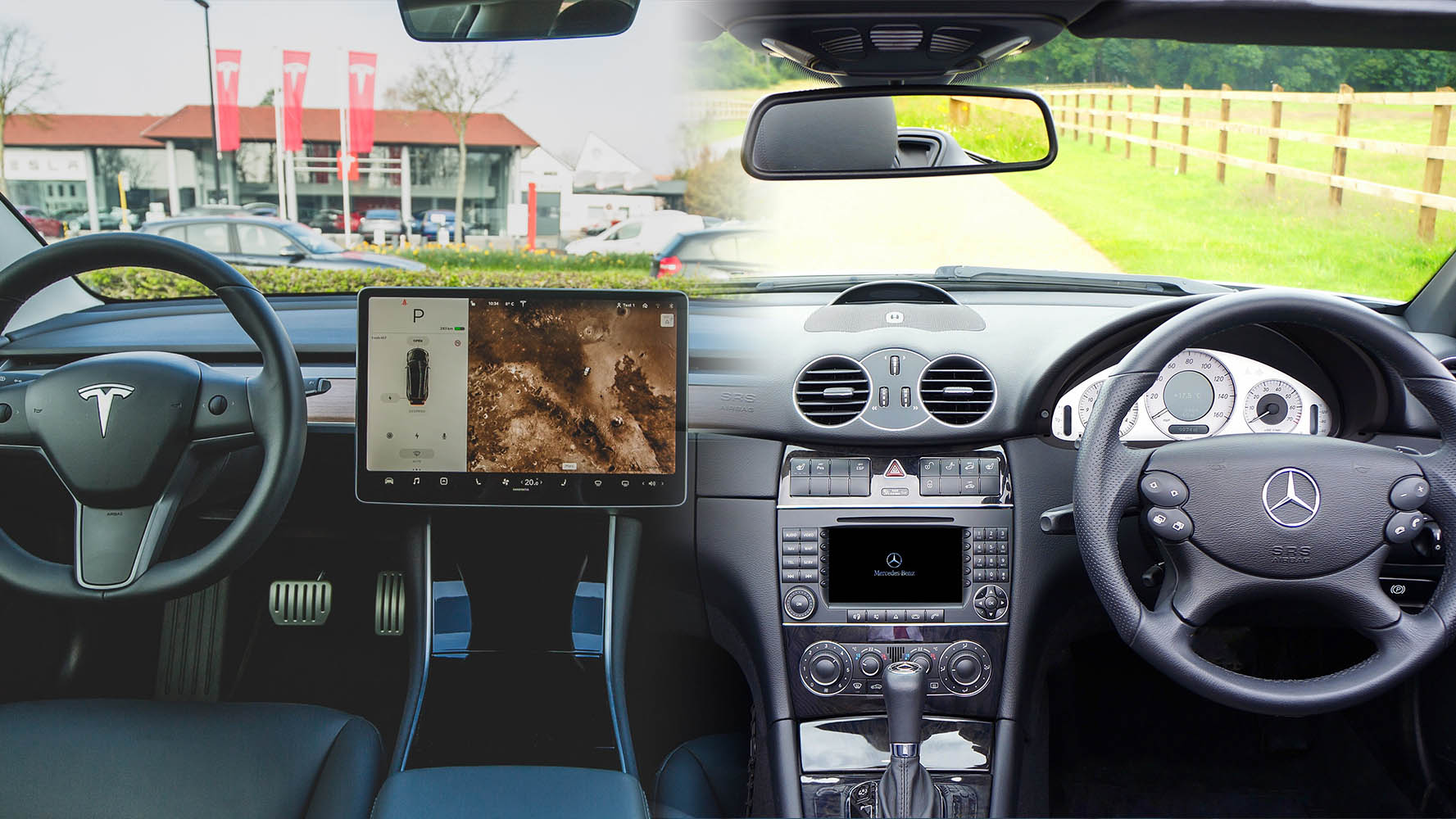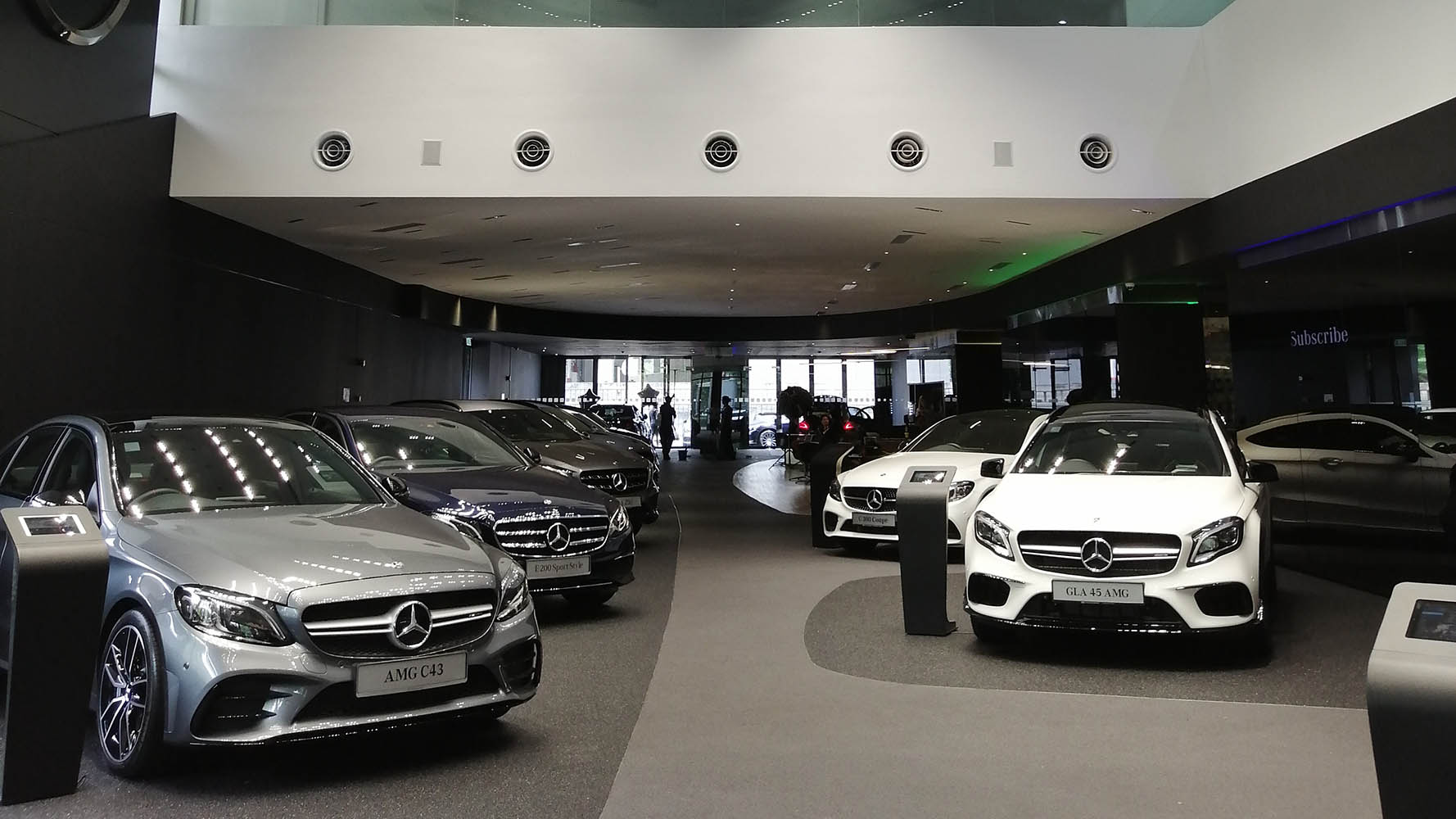
It’s safe to confirm that touchscreens have hit mainstream status in the automotive market. Every new car announced seems to use a touchscreen to control its infotainment system. Not all manufacturers use them the same way. Some prefer to integrate them into classical designs and pair them with mechanical buttons and some goes all-in with the new technology and replace every button with a single big touch display. Tesla even announced not long ago that you would be able to stream Netflix and YouTube on everyone of their car infotainment systems!
Touch infotainment displays are not without their detractors. Some professionals in the automotive industry started to raise flags because touch panels come with safety concerns. Touchscreens can be distracting and deviate the driver’s focus from the road to the infotainment system when he manipulates it. They can be dangerous.
Furthermore, poorly performing touch panels are often used in car infotainment systems. Inaccurate resistive touch displays, slow software and poor graphical user interface designs plagued car infotainment systems for the last years. Fortunately, things are evolving. Car manufacturers are starting to use better touchscreen technologies (like capacitive screens) and tech giants like Apple and Google offers the possibilities to use CarPlay and Android Auto in your car. Interestingly, we can also see that the different car manufacturers around the world have different approach on how to use displays in cars.
Car Manufacturers Have Diverging Opinions on Touchscreens

It is probably safe to say that touchscreens in cars are here to stay, but manufacturers don’t always share the same point of view on how to use them. Some embrace touchscreens and use them to replace all the mechanical buttons and control knobs that were previously used, some are starting to remove them from their new models and revert back to using physical buttons.
Tesla embraced touchscreens from the very beginning to control everything in the car. You would be hard-pressed to find a mechanical button in any of their car. Audi is also removing touchpads and knobs from their new models and uses a new touchscreen with their new MMI touch software. They believe touchscreens offer a better experience while using Apple CarPlay and Android Auto features.
On the other side, Mazda is starting to remove touchscreens from their cars. The 2019 Mazda 3 comes with a non-tactile display. You’ll have to use a touchpad and buttons instead to control the infotainment system. They did some research and their data suggest it’s safer to use buttons than a touchscreen. We’ll probably see all of their new models revert back to mechanical buttons and knobs.
Who’s right and who’s wrong? If touchscreens really do represent a safety risk, why are we selling new cars with them? Is there a way to decrease, and even eliminate, those risks? It’s obviously not up to us to decide, but we firmly believe both approaches can be improved with piezo haptics.
First, let's see why car manufacturers design cars with touchscreens.
Customers Love Touchscreens in Cars

The main driver behind the manufacturers’ decision to use touch displays is quite simple: the market demands it. Customers love touchscreens and are looking for them.
Customers already know how to use touchscreens; they use their phone and tablets daily and love the touch interface. They also love the valuable information that big screens can provide like navigation maps, information on incoming notifications like phone calls and text messages, what music you are listening and phone controls with Apple CarPlay and Android Auto. We can’t deny the fact that touchscreens offer more features to the driver. Touchscreens also look cool! Car interior designs using big displays are minimalist, seamless and looks futuristic. It’s easy to understand the appeal of touchscreens for customers.
We think touchscreens are not going anywhere, they’re here to stay. Their size and features will evolve, but we need to find a way to improve their user experience, so they become less of a distraction. Displays are getting better thanks to capacitive technologies and better software like Android Auto and Apple CarPlay, but there is a way to improve touchscreens even further: piezo haptics! Studies show that haptics have tremendous potential to increase safety in the automotive market.
Adding Piezo Haptic Buttons to Touchscreens and Touchpads
Some car manufacturers are starting to dip their toes into haptic technologies. Audi’s new MMI touch software is replacing buttons and touchpads with touchscreens using haptic feedback. Since they believe the touchscreen experience works best with Apple CarPlay and Android Auto, it makes sense to remove buttons. Tier one automotive companies like Bosch and Continental are also using haptics into their new display products. Car manufacturers know that touchscreens do have shortcomings and they are developing solutions to improve them.
Cars using touchpads instead of touchscreens can also benefit from using piezo haptics. They are currently using mechanical buttons to collect input from the driver. Mechanical buttons are more prone to failure. Dust and liquid can get under the buttons and cause serious damage to the electronics. To make things worse, touchpads are often situated near the cup holder in cars, which is the sweet spot for accidents with liquid! A sealed interface using haptics would protect the electronics from dust and liquid.
Haptic feedback brings back the touch sense that we had with physical buttons before touchscreens were used. Touch feedback can let the driver know that his input has been registered by the infotainment system without having to look at the display. You can keep your eyes on the road thanks to haptics! Customers will have all the features they love from touchscreens while reducing their risk.
You may wonder why we believe piezo haptics are better suited in cars. The reason is quite simple, piezo haptics perform better than ERM and LRA and offer more possibilities to customize the user experience. They enable the creation of high definition tactile feedback. You can replicate the feel of a button and trigger different type of feedback depending on the type of input the driver is sharing with the infotainment system. Go take a look at this article to learn more on the differences between the available haptic technologies.
Why Piezo Haptics Are Better Suited for the Automotive Market
The main advantage of piezo haptics vs. legacy technologies (like ERM and LRA) is that they produce stronger feedback. Haptic feedback strength is measured with acceleration (G). The higher value creates the strongest feedback. LRA and ERM can produce feedback up to 2G. Piezo actuators can go up to 50G. That’s more than 20 times more powerful than the haptic feedback you can experience on your smartphone! This can be useful in an automobile since you need to overcome the normal road vibrations so the user can clearly sense the tactile feedback.
Piezo actuators are also smaller than legacy haptic actuators. It’s easier to use them in various areas in the car, like the infotainment system, and improve the driver’s user experience.
Piezo solutions are also more reliable. ERM and LRA rely on moving parts to create feedback while piezo actuators rely on material movement. Moving parts can break over time and stop working. Since a car lifetime is quite long, piezo actuators are more suited to this application.
Piezo haptics can do much more to improve safety than improve the user experience of infotainment systems. We wrote an article on how to improve safety in the automotive industry with haptics. You should look at it!


Leave a comment